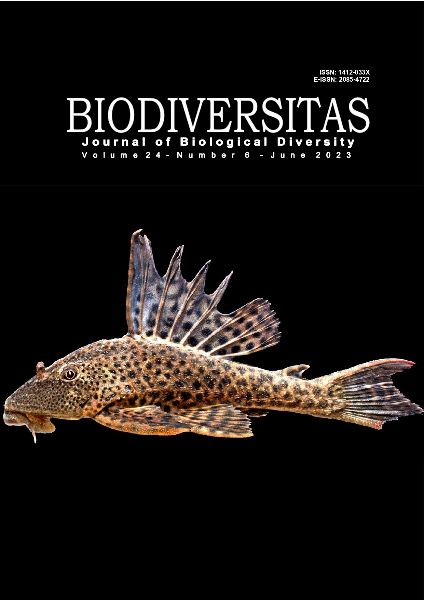Evaluating the virulence factors of Salmonella typhi isolated from children suffering from severe diarrhea using molecular genetic techniques
##plugins.themes.bootstrap3.article.main##
Abstract
Abstract. Jaber AS. 2023. Evaluating the virulence factors of Salmonella typhi isolated from children suffering from severe diarrhea using molecular genetic techniques. Biodiversitas 24: 3543-3549. Salmonella enterica subsp. serotype Typhi is the bacteria that causes typhoid fever. Although its prevalence has significantly decreased in affluent nations, it continues to be a leading cause of illness and mortality in emerging nations. Because of changes in ecology, eating habits, and agricultural and food production techniques, Salmonella infections have increased in frequency in industrialized countries. This study aimed to use qualitative RT-PCR (based on the ttr gene) and conventional PCR to measure the frequency of Salmonella typhi in Iraqi children with chronic diarrhea (based on PagN and TolC genes). This study included 100 stool samples collected from children suffering from continuous diarrhea. Those samples were inoculated on CHROM-agar and incubated 37°C for 18-24 hours, then Salmonella was identified using a Vitek 2 compact system. DNA has been extracted, and qRT-PCR has been done to detect Salmonella sp. by the amplification of the ttr gene. Then PCR also done to amplify TolC and PagN genes. The amplified products then sequenced to reveal mutations within the amplified regions. The results of PagN gene showed 41 samples were positive, and 40 samples were positive for TolC. Results of qRT-PCR according to the ttr gene amplification showed 38 samples positive. The blood group O+ showed a higher number of positive samples (13), and males showed higher positive samples than females (23 and 15, respectively). Sequencing revealed various number of mutations within the amplified regions of both PagN and TolC in the samples which isolated from children with the longest period of illness.

